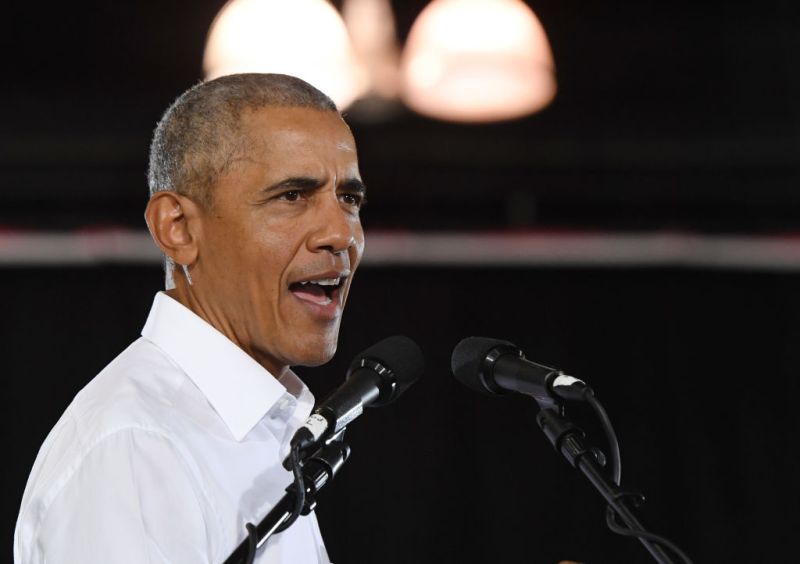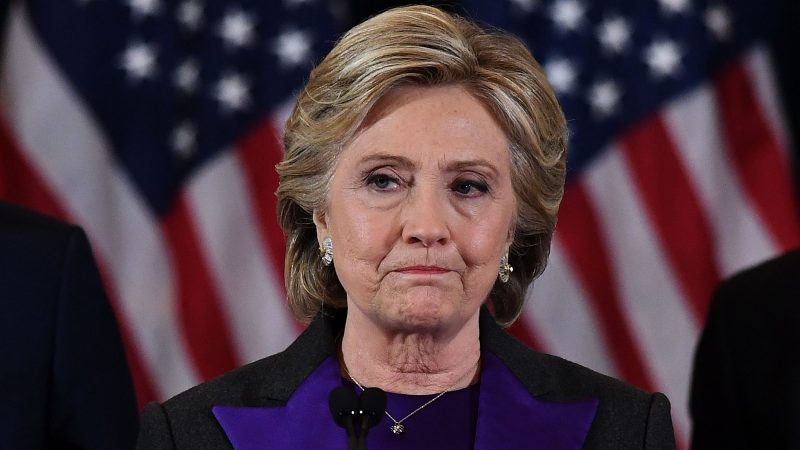The U.S.- China trade war is not a trade war in the traditional sense, nor the result of a childish impulse. Rather, it is the outgrowth of a formal foreign-policy analysis made early in Trump’s administration, which has in turn led the Administration to push back in peaceful ways against China as a “great power rival” before (in the analysts’ opinion) it gets too late. Similarly, Trump’s economic policy has its own clear logic, including emphases on areas of social justice that could well lead to bipartisan action.
This essay will summarize briefings or conversations with current or former top-level government officials and members of the White House policy team, held in a range of settings over a period of months. Whether you like Trump or hate him, and whether you agree with the Administration’s policy choices or oppose them, it is worthwhile to understand that there is, in fact, a coherent policy framework driving day-to-day events, and to understand what that framework is.
Trump’s policy team sometimes compare themselves to “a submarine.” They are trying to pursue a steady course underneath the storms of daily political and media life in Washington.
Their basic economic formula is simple: The economy is, by definition, equal to the size of the labor force times the productivity of the labor force. The Administration has been working in various ways to increase both the labor pool and its productivity, and to make sure that a fair portion of benefits from economic growth will accrue to the workers themselves.
The Administration assumes that productivity can be increased by increasing the level of business investment made for this purpose, and that a business’s decision to invest is driven by projected economic returns and confidence in the future. To increase business investment and productivity, the Administration has pursued four policy prongs: deregulation (much of which has been successfully accomplished, with more to go), tax reform (significantly achieved, with corporate rates lowered to 21%), energy reform (significantly underway, to encourage U.S. production) and infrastructure improvements (a significant opportunity for bipartisan cooperation in the coming Congress, if the Dems will allow Trump “a victory” ahead of 2020).
At the same time, the Administration is seeking to increase the size of the labor force through an increase in labor participation rates as compared to the very low levels of the Obama days. Jobs are being created through business growth and expansion, and the 2017 tax reform gave a near-term boost. However, the Administration also hopes that tax reform’s greatest benefits may still be in front of us for years to come, as companies shift their supply chains over time increasingly to favor U.S. locations, now that the tax advantage of foreign locations has been substantially reduced or eliminated.
The Administration’s policies to increase labor participation include opioid reform, prison reform and worker training — all progressive “social justice” issues which may gain bipartisan support. The Administration is also focused on ensuring that more of the one million or so legal immigrants each year have the skills the economy needs.

Trump has positioned himself as a strong friend to American workers, as symbolized by his anger over the announced GM plant closings and by the Administration’s effort to increase North American auto content and wages as NAFTA is replaced by USMCA. Expanded economic opportunity for African American and Hispanic workers is entirely consistent with this message, and is a centerpiece of Trump’s social-justice record as well.
Despite the decline in the stock market over the last month or two, the results of Trump’s economic approach must be judged a success so far. Economic growth is on track to exceed 3% this calendar year, roughly twice the growth rate as Obama’s term ended. Unemployment, at 3.7% overall, has fallen toward record lows for Americans as a whole, and for African Americans and Hispanic Americans in particular. Wages are now rising at over a 3% annualized level for the first time in many years, and anecdotes point toward worker shortages and job openings unfilled. Meanwhile, inflation remains muted, at around 2%. Reagan’s famous “misery index” measure (the sum of the unemployment rate and the inflation rate) is near ideal.
Obama cannot rightfully take credit for Trump’s success as he tried to do during the midterm elections. The best chance for rapid economic growth comes in the initial years of recovery from a recession — not 10 years after the fact. Yet the economy never grew at 3% in any calendar year under Obama, and he oversaw the slowest post-recession economic recovery on recent record. The crash began under George W. Bush, not Obama; however, the major steps for the recovery — including TARP and loose Fed policy under Bernanke — were put in place under Bush as well. Obama’s increased regulation and his obvious distrust for the private sector (“You didn’t build that…”) were drags on both economic growth and on wages.

In foreign policy, the current administration is following a different set of policies and principles, which also have their own internal consistency (right or wrong), but which may unavoidably work against rapid economic growth in some cases. The current China “trade war” is an example of these policies, and of the potential clash between economic and foreign policy objectives.
Early in Trump’s administration, when H.R. McMaster was still National Security Advisor, a full review was made of the assumptions underlying America’s foreign policies, and a new position was reached on China. For many years, as China began to reform its economic system toward free-market economics and began to prosper, the U.S. government was highly accommodating. The expectation was that China might break some rules as it rose from poverty, but would limit its ambitions and join the world system as a cooperative, Western-style power once it gained strength. Accordingly, China was invited into the W.T.O. and similar organizations.
The Administration’s more recent analysis has determined that China will not simply become one, more mild-mannered “club member” if left unchecked. Rather, the Administration has concluded that China is seeking to surpass the U.S. as a global leader, and is promoting centralized government power as the model for the world to follow, at the expense of Western, liberal-style democracy, personal freedoms and individual rights.
Given its new assumptions, the Administration now views Chinese programs in a less benign light than in the past. For example, China’s One Belt, One Road initiative is considered a predatory program under which weak nations are tempted to accept Chinese infrastructure loans that the debtor nations cannot afford to repay, such that they will be forced to sell key assets to China (such as resource rights or port rights) and fall into vassal status to Beijing over time. Meanwhile, China’s naval buildup and construction of bases in the South China Sea is seen as a significant long-term challenge to allies in the region, and to freedom of the seas. And finally, the country’s recent history of cyberespionage and the stealing of corporate trade secrets are seen to have geopolitical importance far beyond mere corporate profits.
The Trump Administration has also determined that it is better to express U.S. opposition to this Chinese path in peaceful ways, rather than to allow the situation to go unchecked and become more dangerous over time. This pushback against China can well last for years or decades, and is taking shape in a range of ways. The U.S. is trying to step up its own alternative lending programs to China’s One Belt, One Road, and is warning borrower nations on the dangers of Chinese debtor status. U.S. Navy ships keep steaming through contested South China Sea waters and the Taiwan Strait.

In September 2018, the Justice Department ordered key Chinese state media companies to register as foreign agents. And on November 1, 2018, the Justice Department issued a press release (“Attorney General … Announces New Initiative to Combat Chinese Economic Espionage”) explaining that the DOJ — which had not charged anyone with spying for China in 2013 to 2016 — had charged three persons in 2017, and had five other cases underway in 2018 (perhaps including the Huawei prosecution which has exploded into the headlines over the past week).
All this means that the “trade war” with China is very different from the trade wars with Mexico, Canada, the EU, Japan and Korea. The latter set of disputes are, in fact, just traditional economic trade disputes with allies, centered on topics such as Canadian levies against Wisconsin dairy products. They revolve around simple matters of dollars and cents, and there is no major underlying geopolitical fracture to heal. In contrast, the China dispute is more complex and potentially intractable, and may last a long, long time.
The traditional trade disputes with Canada, Mexico et al. have felt “hotter” than normal because Trump has chosen a different negotiating path than a typical president. In traditional diplomacy, the appearance is given that all nations are essentially equal because they are all sovereign (an idea that dates back to the Treaty of Westphalia in 1648 and which is symbolized, for example, by the idea of one vote for each nation in the United Nations General Assembly). Meanwhile, the rules in commercial relationships outside of government are quite different: in the commercial world, the biggest customer can set the best terms.
Trump is treating commercial negotiations between nations (e.g., the price of Wisconsin cheese in Canadian supermarkets) as commercial transactions. He is negotiating the arrangements via one-to-one agreements as the largest market customer, and is willing to threaten tariffs as a way of proving relative market power between nations. If this is a game of “chicken,” then it is a game of chicken in which the U.S. (with its giant market) is driving a 16-ton tractor trailer and Canada, for example, is in a Volkswagen.
As game theory or as a commercial matter, Trump’s strategy is eminently rational and has already appeared to work, with basic trade frameworks now in place with Canada, Mexico, Korea, Japan and the E.U. At the same time, treating commercial negotiations between nations on commercial terms does not mean that sovereignty is disrespected in non-commercial contexts, such as right to self-government or the right for each nation to set its own laws and policies. If anything, Trump’s “nationalist” focus on each nation representing its own people first is the essence of equal respect for each nation’s sovereignty, at the expense of supranational bodies.
The key point is that the trade-war situation with China is extremely different from these commercial-based negotiations. Here we face a great power rivalry, not a dispute over Wisconsin cheese.
The U.S. is pushing against China for a set of non-negotiable and fundamental principles — freedom of the seas, the ending of cyberespionage, the long-term preeminence of democratic freedoms and Western values over central government control — and is relying on trade and tariffs to support a much broader message. There is no single simple “ask” short of China deciding to become a club member rather than founder of its own new global dynasty.
The pursuit of America’s foreign-policy goals is not driven by near-term economic measures, and the U.S.-China trade wars may well slow up growth for both nations. However, there is a larger goal at stake than commerce, as America peacefully pushes China to moderate its ambitions now and so avoid an even greater — even military — conflict later. For domestic political reasons, both governments will need to keep one eye out for the economic harms they create as competition unfolds. There are likely to be short-term economic treaties followed by renewed trade frictions, continuing off and on, hotter and colder, for a long time to come, in a sawtooth pattern. At the same time, China may be far more fragile than it appears, and the U.S. is also trying to stop short of cracking China’s economy — and so wounding the global economy — too severely.
The key elements of Trump’s foreign policy beyond China are too extensive to describe in this space, but appear to include the following: The Iranian government regime is seen as the center of Mideast discord, while Saudi Arabia and the Sunni Arabs had been seen as the necessary counterbalance to Iran, and as a new potential ally for peace in Israel. The North Korean regime is to be managed with a carrot and stick — roughly a choice between annihilation on the one hand, and luxury beachfront hotels on the other. Putin appears to be seen as a Loki-like figure, pursuing his own devious games for his own mischievous purposes, but still not central to the long-term future of the world. And the U.S. supports NATO, but asks NATO allies to honor the financial pledges they already made.
Some critics have argued that Trump is withdrawing the U.S. from world affairs, and abdicating our global leadership. However, the better interpretation is that he is aggressively participating in global affairs, but will readily sacrifice the diplomatic courtesies of an establishment figure when he feels substance is on his side. Here, as with the economy, Trump is the polar opposite of Obama, who spoke like a global leader but withdrew the U.S. from Iraq, allowed ISIS to gain a caliphate and allowed Syria to implode, all of which created immense suffering and sent the million refugees toward Europe that have so destabilized the E.U.
Rather than being more isolationist than Obama, Trump has pushed harder against North Korea and Iran. He has placed greater sanctions on Russia and Putin than Obama did (including sanctions against oligarchs, sale of stronger arms to Ukraine, firefights by U.S. troops against attacking Russian mercenaries in the desert, and now potential withdrawal from the INF nuclear agreement premised on Russia’s violations of that agreement). Although it goes unsaid, it was Obama’s terrible record in foreign policy that helped undercut Hillary Clinton’s claims to be “the most qualified candidate ever” when she ran for president as Obama’s former Secretary of State.

The fact that there is a clear and consistent logic behind Trump’s economic, trade and foreign policies does not mean these policies are problem free. On the economic side, it feels as if far too little attention has been paid to the long-term U.S. budget deficit. And as explained in this essay, Trump’s foreign policy decisions may well override and undercut his economic ones, as may factors outside of his control, from Fed policy to energy disruptions. On trade with allies such as Canada and Mexico, U.S. victories won by game theory and bare-knuckled negotiating in the short run may lead to eventual backlash. In foreign policy, the move away from Obama’s isolationism — Trump’s “speak loudly and carry a big stick” approach — means potential faceoffs with Iran, China, Russia, North Korea and other nations who are being called to task, any of which can become more dangerous with a misstep. Yet it is hard to point to any of Trump’s major policy goals that should be sacrificed. Do we want to concede freedom of navigation in the South China Sea? Permit Iranian-backed terrorism? Accept North Korean nuclear ICBMs? Agree that NATO allies should not honor their pledges?
The message of this essay is not that Trump is always right. It is that he is not acting as the impulsive capricious child that his opponents would make him out to be, nor is he an isolationist abdicating America’s global leadership. There is hard calculation behind his actions to date. Time will tell us the results.
K.S. Bruce writes the “In This Corner” column of opinion for RealClearLife.
This article was featured in the InsideHook newsletter. Sign up now.






















